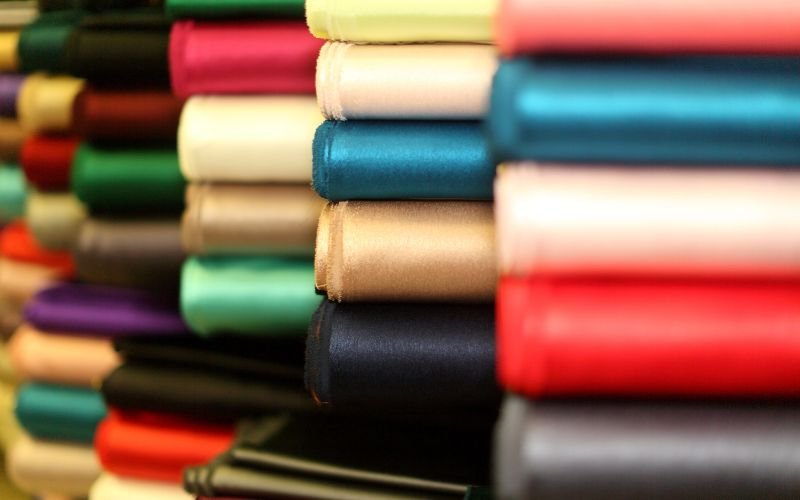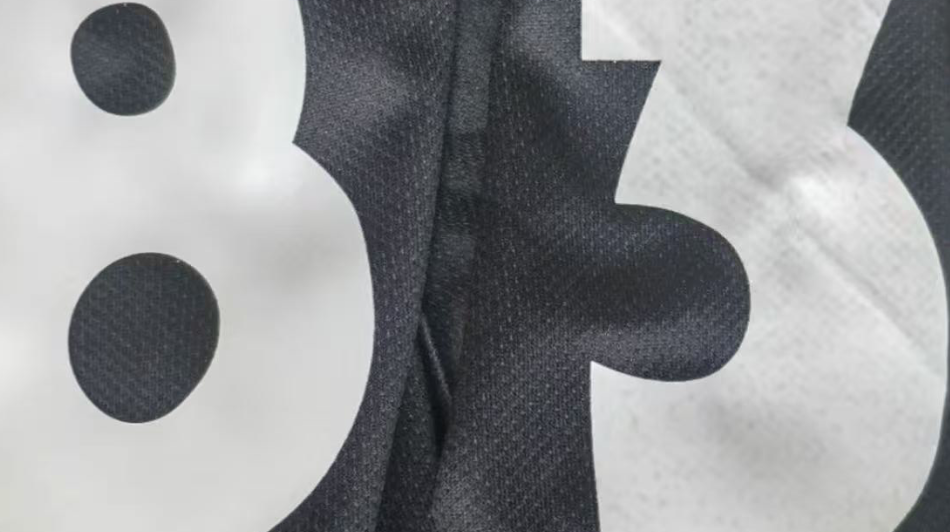Flags are an important symbol of identity, unity, and pride. Whether you’re a business owner, event planner, or just looking to showcase your personal style, custom flags are a great way to make a statement. However, with so many options available, it can be challenging to choose the right fabric for your flag.
Choosing the right fabric is essential to ensure that your flag looks great and lasts long. Each type of fabric has its own advantages, such as durability, resistance to weather conditions, and color retention. This blog post emphasizes the significance of selecting suitable fabric for custom flag and offers useful tips to help you make an informed decision. Whether you’re looking for custom 3×5 flags, custom pennants or any other kind of flag, read on to discover more!
THE PARAMETERS OF FLAG FABRIC
Understanding the units of measurement for textile fibers, threads, yarns, and fabrics is crucial for both manufacturers and consumers to ensure they select the appropriate products for their intended use. These units are diverse and varied, but by comprehending them we can gain a rough understanding of the fabric’s characteristics.
Denier
Denier is a unit of measurement used to determine the fineness of fibers, threads, or yarns. It is defined as the weight in grams per 9000 meters of material. Another frequently used unit for measuring linear density is Tex or Decitex, which measures the length of material in a given weight unit. The thickness and durability of fabric increase with higher denier numbers.
Weight
The term “weight” in the textile industry usually refers to GSM, which stands for grams per square meter. This unit of measurement is used to determine the weight or density of a fabric by measuring its weight per unit area. Higher GSM values indicate thicker and denser fabrics, making it a commonly used specification in the industry.
Thread count
Thread count, also known as threadcount or threads per inch (TPI), is a measure of fabric’s coarseness or fineness. It is determined by counting the number of warp and weft threads in one square inch or centimetre of fabric. The total number of threads counted along two sides (up and across) of the square inch is considered the thread count.The more threads per square inch, the softer and more delicate the fabric will feel.
TYPES OF FLAG FABRICS
The choice of fabric is one of the most important decisions when creating a flag. The right material and textile weaving technology can affect the flag’s durability, appearance, and cost. Here are some common types of flag fabrics:
Material
Flags can be made from both natural fibers and synthetic fibers. Natural fibers such as cotton, wool, and silk are lightweight and absorbent, making them ideal for indoor flags or flags that will not be exposed to harsh weather conditions. Synthetic fibers like polyester, nylon, and acrylic are stronger and more durable, making them ideal for outdoor flags. They are also more resistant to fading and shrinking.
Textile Weaving Technology
Flags can also be made using different textile weaving technologies, including woven and knitted fabrics, as well as non-woven fabrics. Woven fabrics are made by interlacing two sets of yarn at right angles, resulting in a strong and stable fabric. Knitted fabrics, on the other hand, are made by looping yarn in a continuous row, resulting in a stretchy and flexible fabric. Non-woven fabrics are made from fibers that are bonded together through heat, chemicals, or mechanical processes, resulting in a durable and cost-effective fabric.
By understanding the different types of flag fabrics, you can make a more informed decision when selecting the appropriate fabric for your flag.
FACTORS TO CONSIDER IN SELECTING APPROPRIATE FLAG FABRIC
When selecting an appropriate flag fabric, several factors must be considered. These include:
Durability
To ensure the longevity of a flag, particularly when it is utilized outdoors and exposed to harsh weather conditions, it must be able to endure wear and tear. It is recommended that you opt for a robust and durable fabric that can resist fading, tearing, and wearing. Synthetic fibers like nylon or polyester are generally more durable than natural fibers like cotton or silk.
Weight
The weight or hand feel of the fabric can also impact the appearance and functionality of the flag. Lightweight fabrics like polyester are ideal for outdoor flags because they are easy to fly in the wind. Heavyweight fabrics like cotton or wool are better suited for indoor flags because they hang more gracefully.
Visibility
Visibility is an important factor to consider when choosing a flag display. Single-sided flags are designed to be visible from both sides, but the design on the back is a mirror image of the front. On the other hand, double-sided flags consist of two layers of fabric that allow for identical designs on both sides. Additionally, adding blackout fabric between these layers can prevent any interference in strong light conditions and ensure optimal visibility for both sides of the flag design.
Colorfastness
Outdoor flags are vulnerable to damage from various weather elements, including sun, rain, wind, and snow. These factors can cause the color of the flag to fade gradually over time. Among these factors, sunlight is the most significant contributor to outdoor flag fading. Our flags have an ASTM rating of III; however, if you want your outdoor flags to last longer, you can use a fabric protector that blocks UV rays from the sun. This will prevent fabric fading and fiber degradation caused by exposure to sunlight. It’s important to note that this fabric protector should be used during the post-fabric finishing stage of dyeing.
| Material | Type | Lightfastness(1-8) | wash fastness(1-5) | rub fastness(1-5) | Outdoor service life(summer) |
| Polyester | Disperse dye | 5 | 4 | 5 | Discoloration begins to appear after 21-35 days |
| Cotton | Active dyes | 4 | blue or green3,red3.5,other 4 | 3 | Discoloration begins to appear after 14-21 days |
| Nylon | Acid dye | 3 | 4 | 4 | Discoloration begins to appear after 14-21 days |
| Any fabric | Water-based pigment | 5 | 5 | 3 | Discoloration begins to appear after 21-35 days |
Please be aware that higher numbers indicate better color fastness. The outdoor service life calculation is derived from customer feedback and testing conducted over several years. However, the specific duration may vary depending on factors such as pattern colors, sunlight intensity, and time differences.
COMMON FLAG FABRICS
When it comes to choosing the right fabric for your custom flag, there are several options available. Here are some of the most common flag fabrics:
Polyester pongee 75D

Polyester Pongee 75D is a highly versatile fabric that finds extensive use in both indoor and outdoor flags. With its lightweight, smooth texture and affordable pricing, it boasts of a yarn count of 75d*75d and density of 170t. Weighing only 50gsm, this fabric is easy to handle and display. It’s an ideal choice for flag-making as it can showcase intricate designs with vibrant colors. Additionally, the ink penetrates the back of the flag due to its lightweight nature, creating an impressive mirror image pattern.
Polyester Oxford

Polyester Oxford is a popular banner fabric that offers excellent durability and fade resistance. It has a plain structure and is made of polyester. This versatile fabric comes in various weights, including 75gsm, 100gsm, and 150gsm, as well as different yarn densities such as 100D*100D, 200D*200D, and 300D*300D. The denier number determines the thickness of the yarn used to make the fabric; therefore higher numbers indicate greater abrasion resistance. We carry an extensive selection of oxford fabrics in various sizes to ensure your products can withstand harsh weather conditions with ease.
satin

Satin is a lustrous and sleek fabric that finds its use in high-end flag production due to its opulent appearance. Typically, satin is composed of polyester, which imparts durability and resistance to fading, making it an ideal choice for prolonged outdoor usage.
The commonly used satin in flag production has a yarn count of 50D75D with a density of 3336 and weighs around 72gsm. This fabric exhibits a subtle sheen and possesses a soft, silky texture that makes it perfect for indoor display or light outdoor use.
For more upscale applications, premium bridal satin having a yarn count of 100D*200D with a weight of 170gsm can be utilized. This type of fabric has higher thread counts and heavier weight resulting in thicker and more luxurious feel. Premium flags made from this type of satin are often customized for special events.
knitted warp fabric

Polyester knitted warp fabric is a commonly used material for flags. This type of fabric is created by knitting yarns together to form a flat surface and comes in two weights: 110g and 220g. One of its key features is the matte finish, which reduces glare and enhances readability of any text or images printed on the flag. Additionally, it’s highly durable and wrinkle-resistant, making it ideal for outdoor use or in high-wind conditions. Often treated with anti-wrinkle and anti-abrasion properties, this fabric offers excellent value for money when choosing materials for your flag-making needs.
Cotton Canvas

Custom-made flags can be made using a variety of materials, and one popular option is cotton canvas. Cotton canvas is a durable and versatile material that can be used for a variety of applications.Cotton canvas has a natural look and feel that is well-suited for custom-made flags. It has a matte finish that gives it a classic, timeless look, and it can be dyed in a wide range of colors.
Felt

Felt is a non-woven fabric commonly used in Felt Pennants-making. The raw material for flag-making felt is usually polyester. Felt has many advantages as a flag material, including its durability and resistance to tearing. It is also easy to work with, making it a popular choice for custom Felt Pennants.
Felt flags also have a soft, textured look and feel, which can add a unique dimension to a flag design.
Felt is a dependable and adaptable material for creating custom flags. Its numerous benefits have made it a preferred choice for various applications. Whether you need to design a flag for your business, sports team, or event, felt is an excellent option worth considering.
BEST PRACTICES IN FLAG PRODUCTION
When it comes to flag production, it’s not just about choosing the right fabric, but also using the appropriate production techniques and quality control measures to ensure that the final product is of the highest quality. Here are some best practices to keep in mind:
Importance of selecting the right fabric for a specific event or use
Different events or uses may require different flag fabrics. For example, a flag that is going to be flown outside may need to be made from a more durable material, while a flag that will be used indoors can be made from a lighter fabric. It’s important to consider the intended use of the flag when selecting the fabric to ensure that it can withstand the elements and provide the desired visual impact.
Production techniques and quality control measures to ensure superior flag production
Flag production requires a high level of attention to detail to ensure that the final product meets the desired specifications. Techniques such as double-stitching and reinforcing the edges can help to improve the durability of the flag. Quality control measures such as inspecting the finished product for any defects or irregularities can help to ensure that the flag meets the desired standard.
Tips for maintaining and cleaning flags for maximum longevity
To ensure the longevity of a flag, it’s important to properly maintain and clean it. Regularly inspecting the flag for any damage and repairing it as necessary can help to prevent further damage. Cleaning the flag with mild soap and water, and avoiding harsh chemicals or bleach, can help to prevent the fabric from deteriorating. Additionally, storing the flag in a cool, dry place when not in use can help to prevent it from becoming damaged by environmental factors.
CONCLUSION
Choosing the right fabric is crucial for custom-made flags to ensure their durability, visibility, and overall quality. Each fabric has unique characteristics and advantages that must be considered when selecting one for a specific event or use. Factors such as weight, colorfastness, and visibility should also be taken into account to make an informed decision.
Moreover, production techniques and quality control measures play an important role in ensuring superior flag production. Attention to detail is essential during every stage of the process – from material selection to printing and finishing.
At Joyful Promotions, we offer custom flag printing services using high-quality materials and advanced printing technology. Our experienced team is dedicated to providing exceptional results while meeting our clients’ specific needs and requirements. We take pride in delivering custom flags that exceed expectations.



